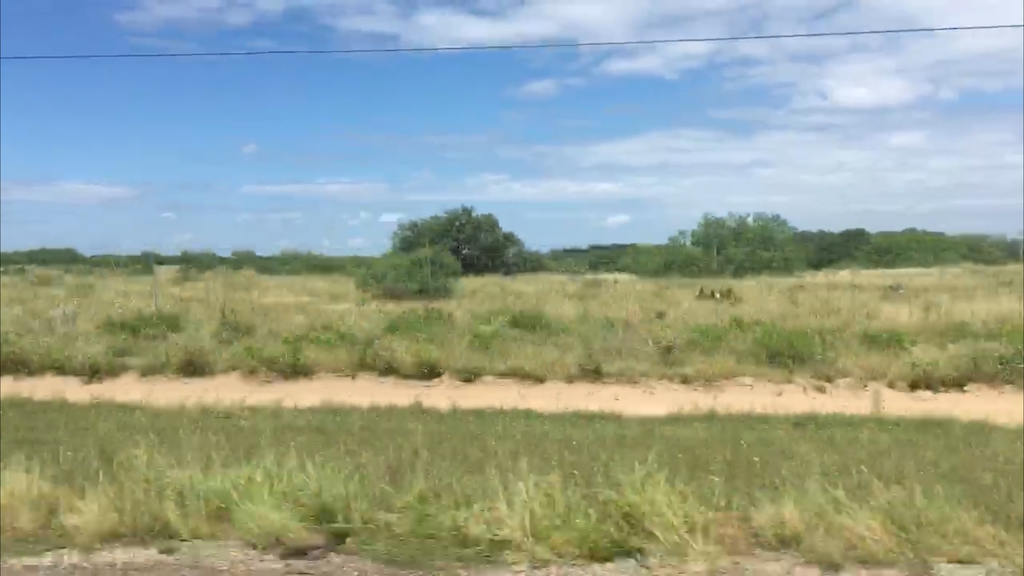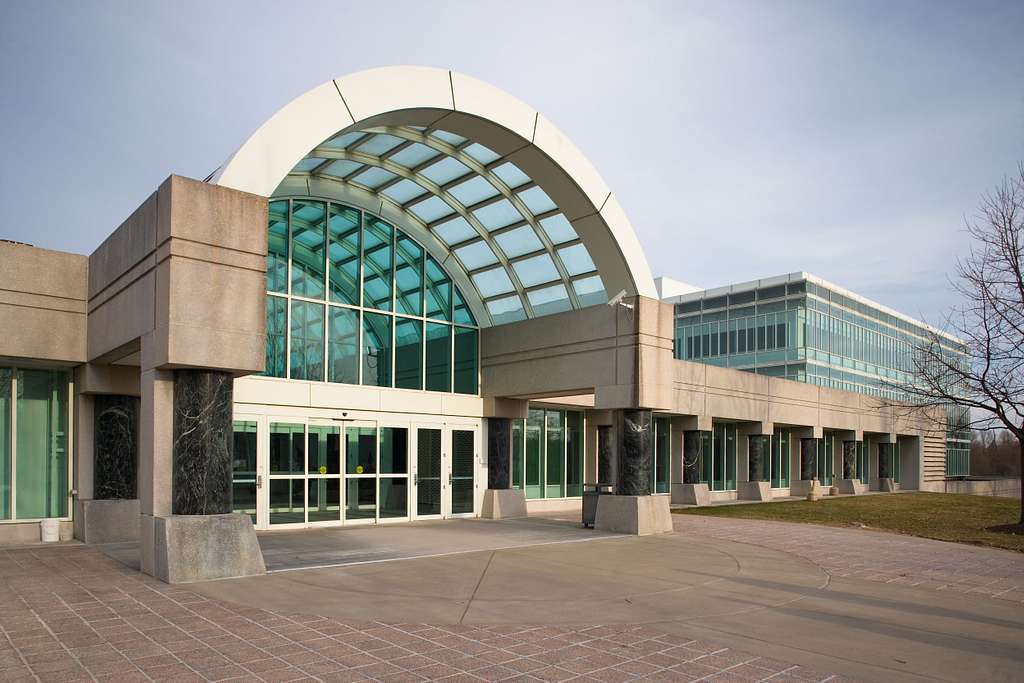In the Brush in Brooks County: Who’s Dying in South Texas?
What can we learn about who’s trying to enter the United States from the 650 death reports of people who didn’t make it?

Published by The Lawfare Institute
in Cooperation With

This is the second installment in a series on the deaths of 650 people in Brooks County, Texas, between 2009 and 2019 while attempting to circumvent a nearby Customs and Border Protection checkpoint. The first installment can be found here. The entire series can be found here.
Interstate 281 slices north and south bound through the 944 square miles of Brooks County in South Texas. Its lanes cut through the county’s ranchland, flanked by sandy banks, mesquite trees and small shrubs. It’s a beautiful, rugged geography; and from the highway, it also looks completely desolate—not a human or animal in sight. It’s difficult to imagine that hundreds of people are out in that brush at any given time, looking for shade, hiding from the Border Patrol and walking northward toward the interior of the country. Yet they are there.
Brooks County is not on the U.S.-Mexico border. It is 70 miles north of it, and more than an hour’s drive from the nearest Mexican city of Reynosa. Surrounded by ranches that stretch toward the horizon, it is easy to overlook this land’s connection with the border. In fact, the only reminder that the county’s story is intertwined with U.S. immigration policy is the occasional Border Patrol vehicle parked at the side of the road or at a gas station in Falfurrias, the largest city in Brooks County and home to 5,000 residents.
But this stretch of territory is not deserted. And it is actually one of the front lines of the United States’s immigration and border policy.
The link connecting Brooks County to U.S. immigration policy is the Falfurrias Border Patrol checkpoint that stretches over Highway 281’s northbound lanes. Located just north of Encino, Texas, the checkpoint brings northbound traffic to a crawl. Cars and trucks inch their way into the checkpoint and up to a Border Patrol agent waiting on the side of the lane with a single question: “Is everyone in the car an American citizen?” It’s a relatively simple question in a relatively small piece of infrastructure. But, asked often enough, it pushes thousands of people into the brush and hundreds to their deaths.
For someone trying to get into the country’s interior without authorization, crossing the border is not enough. The secondary hurdle in Brooks County is an even bigger challenge.
The people who move through this part of South Texas generally enter the United States near McAllen, Texas, after crossing the Rio Grande on rafts. Once inside U.S. territory, smugglers stash the crossers in nearby safe houses. The accommodations are far from welcoming, with low-quality food, dirty water and, at times, cramped quarters. But the worst part is yet to come. These unauthorized crossers will now get in a car or truck and drive 50 miles north before being dropped off on the side of a sandy backroad. Only then will they begin their three- to five-day journey in the brush to circumvent the Falfurrias checkpoint.
To prepare for the trek, crossers come with stuffed backpacks. Crossers carry bags stuffed with tortillas, canned beans, tuna fish, fruit cups, granola bars, and apples. They carry water and drinks such as Gatorade and Pedialite, either in their hands, tucked in backpacks or tied to ropes in makeshift slings. The people undertaking the hike wear rosaries around their necks and carry prayer cards in their pockets. They also carry other items for immediate salvation, from Icy Hot to Tylenol to diarrhea medication.
The people making this journey are almost exclusively adults traveling in small groups. Within Brooks County, they follow one of the many and constantly changing paths through the brush. GPS coordinates of where human remains have been discovered in the county suggest some better-traveled paths, including next to electrical power lines or other visible infrastructure. Yet mapping the coordinates of where human remains have been discovered looks more like a random scatterplot dropped on top of a county map. The deaths are everywhere.
Each marker is the geolocated coordinates of a recovered body within Brooks County (2009-2019)
Deaths in Brooks County most frequently result from the unrelenting South Texas sun, although the cold winters can be deadly too. Temperatures in the summer months between June and September regularly surpass 100 degrees. Even sitting in the shade is enough to leave anyone drenched in sweat. And crossers are often not sitting but rushing through the summer heat. The entire situation is complicated further by the crossers’ thick, dark clothing amid the heat. They often wear jeans, hiking boots and sometimes even long-sleeved shirts, even in the hottest months. The choice of clothing is strategic, designed to avoid detection; no crosser wants to be wearing white or another bright color if a Border Patrol agent suddenly appears—and long sleeves serve as a protection against the thorns and branches that scratch any exposed skin. But while such clothing is adaptive for the terrain, it doesn’t work for heavy exertion over many days in the weather typical of the county.
Worse still, many of the crossers in the Brooks County case files appear altogether unprepared for the multiday journey through Texas brushland. Despite needing sturdy hiking shoes for the rough terrain, one 55-year-old Mexican grandfather wore cowboy boots; a 47-year-old Salvadoran man wore dress shoes. And a Guatemalan woman wore fashionable ankle boots. Multiple women wore layers of spandex pants that would not be breathable in the heat, and others were found frozen after carrying only thin sweaters in freezing weather. A major theme of these death reports is that poor preparations—from a lack of knowledge about the trek or an inability to obtain better gear—become deadly in the face of the unrelenting natural elements.
If the crossers can make it out of the ranchland undetected and alive at the end of their multiday trek, they will be picked up by cars at predetermined destinations just north of Falfurrias and the checkpoint. Their next stop will be Houston, where the crossers will once again be held in safe houses until their families make the final smuggling payments.
Those who do not make it out of the brush end up in a white binder in the Brooks County Sheriff’s office, if they are even found.
I have no idea what percentage of people end up in these binders and what percentage make it to Houston—and neither does anyone else. I also don’t know what percentage of deceased crossers are actually found. But Sheriff Martinez believes that for every body discovered in his county, five more are never found.
Migrant deaths in this part of Texas began long before 2009, when the Brooks County Sheriff’s Office began tracking deaths and storing them in white binders. For more than 80 years, Mexican migrants have died crossing the border in inverse relation to U.S. receptivity to Mexican labor. From 1985 and 2005, an estimated 50 to 75 people died each year in South Texas, while hundreds more also drowned or died of exposure across the entire border. Over the past decade, the numbers have worsened, driven by increased U.S. enforcement efforts, changing smuggling and migration patterns, and ever hotter South Texas summers.
In this part of South Texas, Mexican nationals have historically made up the majority of crossers and deceased individuals. These were male laborers working seasonally on farms in the state or beyond, and often heading home to their families in Mexico when the job was done. These numbers began to drop as U.S. border enforcement made the circular journey prohibitively expensive, dangerous and uncertain. By 2012, Central Americans from Honduras, El Salvador and Guatemala began to outnumber Mexicans on the Brooks County trails for the first time. These Central Americans were leaving behind gang violence, droughts, climate change and political instability, and reuniting with family members who had migrated previously. In 2018, Central Americans made up two-thirds of all bodies or human remains recovered in Brooks County.
While most crossers are Mexican or Central American, they are not the only people traveling in the South Texas brush. In fact, crossers come from all around the world. Over the past 10 years, a small number of people in the Brooks County binders came from Ecuador, the Dominican Republic and Brazil. One 20-year-old man even came from China, with his Chinese identification card and 442 Chinese Yuan still tucked into his jean’s pockets.
These more globally transient crossers challenge the simple explanations of who is traveling through South Texas. But geographic diversity was not the only demographic surprise in the case files. Another is the relatively high percentage of women.
From 2009 through 2014, women made up 20 to 40 percent of the deaths in the files, dropping to 14 percent in the following years. These women were of all ages and backgrounds, traveling with family members, husbands or, at times, alone. It is possible that these numbers overcount the percentage of women who were walking the trails. Women could simply be dying in greater numbers than men, thus overstating their presence in the migration population—a result of the many additional risks that women face in the brush. And there is some evidence of this. Multiple female bodies discovered in the brush showed clear signs of sexual assault and murder. But whether this suggests that women are overrepresented in the population that dies in the brush, relative to the population that makes it through, is unclear.
What we do know is that since 2009, at least 124 women traveled and died on those paths, along with some 358 men. The gender of the other 168 skeletal remains could not be determined.
This brings me to an additional point about the human remains that make up the contents of the white binders: the condition of the bodies differs significantly. Some times, people are discovered relatively quickly. Sometimes, it takes months—or years. In some files, the pictures are of people who look as if they could have drifted off to sleep below a mesquite tree. In other cases, the Brooks County officials are dealing with bones and nothing more. Everything in between also shows up. The Texas elements and wildlife disfigure deceased crossers in a matter of days and, at times, the only visible identifying factors are someone’s clothes and pocket litter.
Minors also make up a small number of deceased individuals in Brooks County. In recent years, the tens of thousands of Central American minors entering the United States have generally sought protection from Border Patrol agents soon after crossing the border. Minors generally aren’t attempting the arduous passage through Brooks County, so the numbers in the case files are not large.
That said, between 2009 and 2018, there were nine cases of minors—aged 15 to 17 from Mexico, Guatemala, Honduras, El Salvador and Ecuador—who traveled through and passed away on this land. A 15-year-old indigenous boy from Quiche, Guatemala, was the youngest crosser. According to a Guatemalan news article, he had been traveling north to earn money for his struggling family when he succumbed to hypothermia amid freezing weather in December 2011.
While there are not a lot of minors crossing through South Texas, there are 22 people in the Brooks County binders who were 50 years or older. Some of these crossers were parents and grandparents, and many carried age-specific items, from reading glasses to targeted medications for their advanced ages. In December 2011, the Border Patrol stumbled upon the body of the oldest crosser, a 69-year-old Guatemalan man. Only months before, Brooks County officials recovered the remains of a 65-year-old widow from Mexico, dressed in a pink shirt and black pants. Her death report notes that she had a son in the United States.
The white binders in Brooks County grow with each passing month. From January through June of this year, county officials recovered 14 human remains, including a 56-year-old man from Mexico and a 43-year-old man from Nicaragua, the latter of whom was heading to Florida. The files also included a 30-year-old woman, who was traveling with her brother and had begun to complain of chest pains during the trek. When she collapsed, her brother didn’t leave her behind but, rather, carried her further into the United States until it became clear that she was not going to awaken.
At the center of this never-ending human toll is the Falfurrias checkpoint. Yet there are also larger, invisible forces at play. Brooks County is the space where border crossers’ dreams of reaching the United States collide with a U.S. immigration enforcement strategy that both lacks legal pathways for migration and intentionally forces crossers into more-remote terrain to make them easier to apprehend. The tragedies and dramas playing out in the brush, and the effects on the officials and people of Brooks County, are collateral consequences of those policy choices.
As long as U.S. immigration policy continues to make these choices, rather than imagine alternative approaches, and conditions in other countries push people to undertake this trek no matter what the possible costs, all the checkpoints in the world won’t solve the problem. People will just go farther out into the brush and Sheriff Martinez’s binders will only continue to thicken.





